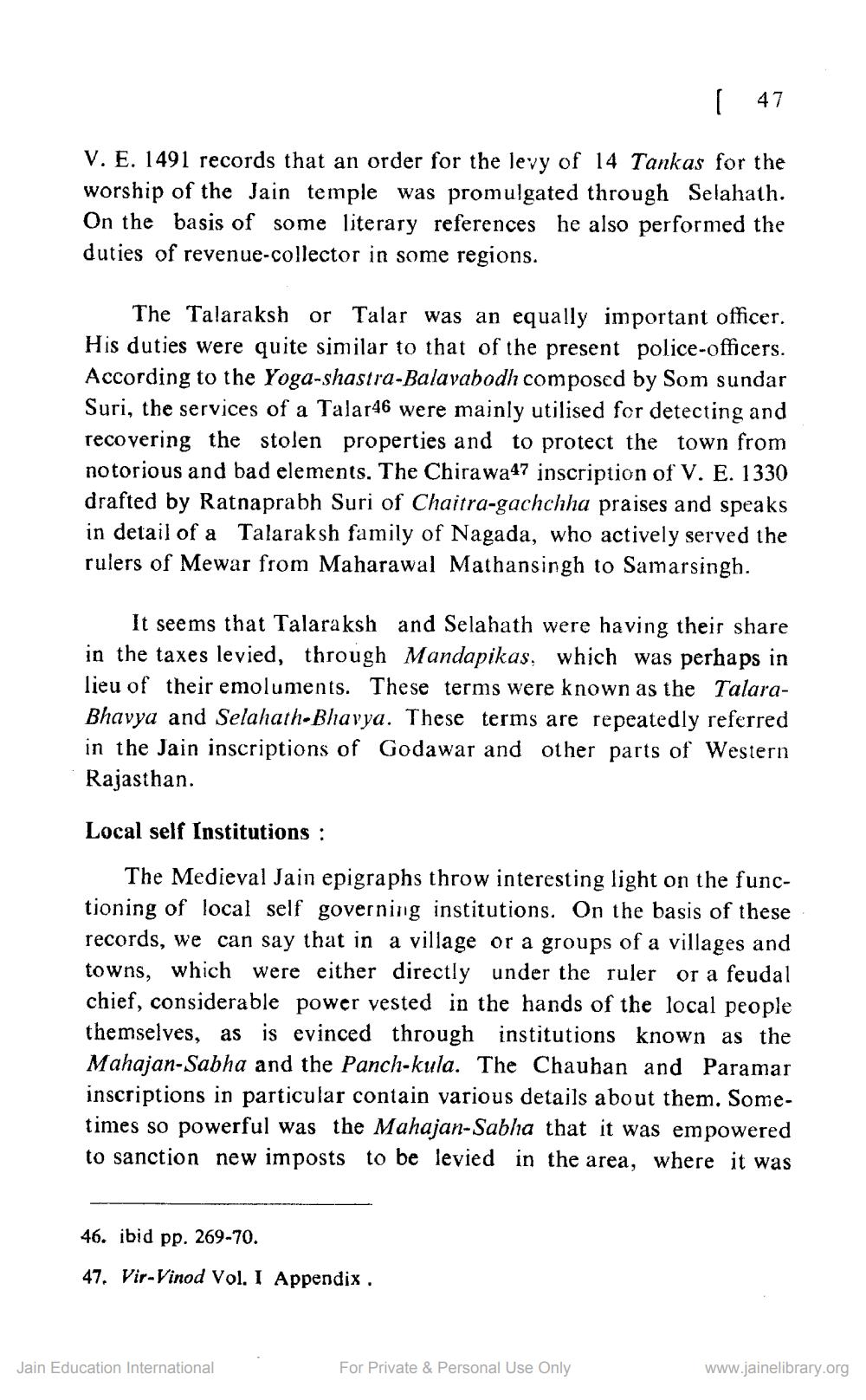________________
| 47
V. E. 1491 records that an order for the levy of 14 Tankas for the worship of the Jain temple was promulgated through Selahath. On the basis of some literary references he also performed the duties of revenue-collector in some regions.
The Talaraksh or Talar was an equally important officer. His duties were quite similar to that of the present police officers. According to the Yoga-shastra-Balavabodh composed by Som sundar Suri, the services of a Talar46 were mainly utilised for detecting and recovering the stolen properties and to protect the town from notorious and bad elements. The Chirawa47 inscription of V. E. 1330 drafted by Ratnaprabh Suri of Chaitra-gachchha praises and speaks in detail of a Talaraksh family of Nagada, who actively served the rulers of Mewar from Maharawal Mathansingh to Samarsingh.
It seems that Talaraksh and Selahath were having their share in the taxes levied, through Mandapikas, which was perhaps in lieu of their emoluments. These terms were known as the TalaraBhavya and Selahath-Bhavya. These terms are repeatedly referred in the Jain inscriptions of Godawar and other parts of Western Rajasthan.
Local self Institutions :
The Medieval Jain epigraphs throw interesting light on the functioning of local self governing institutions. On the basis of these records, we can say that in a village or a groups of a villages and towns, which were either directly under the ruler or a feudal chief, considerable power vested in the hands of the local people themselves, as is evinced through institutions known as the Mahajan-Sabha and the Panch-kula. The Chauhan and Paramar inscriptions in particular contain various details about them. Sometimes so powerful was the Mahajan-Sabha that it was empowered to sanction new imposts to be levied in the area, where it was
46. ibid pp. 269-70.
47. Vir-Vinod Vol. I Appendix.
Jain Education International
For Private & Personal Use Only
www.jainelibrary.org




